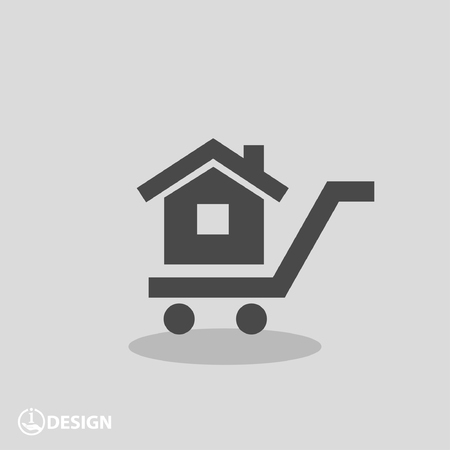Introduction to Outdoor Living Spaces
In many American homes, outdoor living spaces have become just as important as the rooms inside. Whether its hosting summer barbecues, enjoying a quiet morning coffee, or creating a space for kids to play, homeowners are increasingly looking for ways to expand their living areas beyond four walls. Two of the most popular options for enhancing outdoor living are raised decks and ground-level patios. While they may seem similar at first glance, each serves different purposes and suits different types of homes and lifestyles.
A raised deck is typically made from wood or composite materials and is elevated above the ground, often extending from the back of a house. It’s especially common in homes with sloped yards or multi-level structures. On the other hand, a ground-level patio is usually constructed from concrete, pavers, or stone and sits directly on the ground, offering a more seamless transition into the yard.
Understanding the differences between these two outdoor features can help homeowners make informed decisions based on their specific needs, budget, and property layout. Below is a quick comparison to highlight some key distinctions:
| Feature | Raised Deck | Ground-Level Patio |
|---|---|---|
| Elevation | Above ground level | Sits directly on the ground |
| Common Materials | Wood, composite decking | Pavers, concrete, natural stone |
| Best For | Sloped yards, higher home entrances | Flat yards, easy access to lawn/garden |
| Aesthetic Appeal | Tends to look more structured and elevated | Naturally blends with landscaping |
| Main Purpose | Create extended elevated living space | Create grounded relaxation or dining area |
This guide will walk you through the pros and cons of both raised decks and ground-level patios, helping you decide which option best fits your lifestyle and property.
2. What is a Raised Deck?
A raised deck is an elevated outdoor platform, typically made from wood or composite materials, that extends from the back or side of a house. It’s usually built above ground level and supported by posts or piers. This type of deck is especially popular in homes with sloped yards or walk-out basements, where ground-level patios may not be feasible.
Definition and Structural Characteristics
Raised decks are constructed to provide a flat surface for outdoor living when the natural terrain isn’t level. They are often connected directly to the home’s second story or main living area and can include stairs leading down to the yard. Because of their elevation, these decks typically require railings for safety and may include skirting around the base to conceal structural supports.
Common Features of Raised Decks
| Feature | Description |
|---|---|
| Elevation | Built several feet above ground, often at the same height as the homes main floor |
| Support Structure | Uses posts, beams, and joists anchored into concrete footings |
| Safety Elements | Includes railings, stairs, and sometimes gates for child and pet safety |
| Design Options | Can incorporate multiple levels, pergolas, built-in seating, and lighting |
Common Materials Used in Raised Decks
The most frequently used materials for raised decks include:
- Pressure-treated lumber: Affordable and widely available; requires regular maintenance.
- Cedar or redwood: Naturally resistant to rot and insects; more expensive than treated wood.
- Composite decking: Made from wood fibers and plastic; low maintenance and durable but higher upfront cost.
- PVC decking: 100% plastic material that resists moisture and stains; ideal for wet climates.
Typical Use Cases for Raised Decks
Raised decks are a practical solution for many types of properties. Here are some common scenarios where they shine:
- Sloped Yards: When your backyard has uneven terrain, a raised deck creates a level space without major landscaping work.
- Walk-Out Basements: Homes with lower-level exits benefit from having a raised deck off the main floor for better access and views.
- Enhanced Views: Elevated decks offer better sightlines over fences, trees, or neighboring houses — great for scenic backyards.
- Add-On Living Space: Perfect for extending your indoor living area outdoors with room for seating, dining, or grilling.
A raised deck can transform your outdoor space into a functional and stylish extension of your home — especially when elevation is a challenge or an opportunity.
![]()
3. What is a Ground-Level Patio?
A ground-level patio is an outdoor living space that sits directly on the ground, usually built at or just slightly above the natural grade of your yard. Unlike raised decks, which are elevated and supported by posts, patios are more grounded—literally. Theyre a popular choice for homeowners looking to create a seamless transition from indoor to outdoor spaces, especially in homes with flat yards.
Common Materials Used
Ground-level patios can be made from a variety of durable materials, each offering its own aesthetic and functional benefits:
| Material | Appearance | Durability | Maintenance |
|---|---|---|---|
| Pavers | Variety of colors and shapes; customizable patterns | High | Low to Moderate |
| Concrete | Smooth or stamped finish options | Very High | Low |
| Flagstone | Natural, rustic look with irregular shapes | High | Moderate |
Best Environments for Ground-Level Patios
Ground-level patios are ideal for certain types of landscapes and home layouts. Here’s when they work best:
- Flat Terrain: Because they follow the natural contour of the land, patios are easiest and most cost-effective to build on level ground.
- Garden Integration: Patios blend beautifully with gardens and landscaping features like flower beds, ponds, or small trees.
- Outdoor Dining & Lounging: If youre envisioning an outdoor grill station or cozy seating area, patios offer a stable base without the need for railings or stairs.
- Budget-Friendly Projects: Generally speaking, patios tend to be less expensive than raised decks due to simpler construction requirements.
Style and Flexibility
The versatility in design makes ground-level patios a favorite among homeowners who want to personalize their outdoor space. Whether you prefer a sleek modern layout using concrete slabs or a charming country feel with natural stone, theres plenty of room for creativity.
Design Tip:
Add borders, lighting, or built-in planters around your patio to enhance its functionality and style. Since its at ground level, these features can be easily incorporated without structural complications.
Quick Summary:
| Feature | Description |
|---|---|
| Location Suitability | Best for flat or gently sloping yards |
| Main Materials | Pavers, concrete, flagstone |
| Main Benefits | Cost-effective, low-maintenance, easy garden integration |
| Main Limitations | Less suitable for uneven terrain; limited elevation options |
A ground-level patio provides a practical and stylish way to extend your living space outdoors without the complexity of elevated construction. Its an excellent option if youre working with level ground and want something that feels naturally integrated into your backyard setting.
4. Pros and Cons of Raised Decks and Ground-Level Patios
When deciding between a raised deck and a ground-level patio, its important to weigh the benefits and drawbacks of each based on your needs, budget, and property layout. Heres a breakdown of key factors like cost, maintenance, visual appeal, privacy, and impact on home value.
Cost Comparison
| Feature | Raised Deck | Ground-Level Patio |
|---|---|---|
| Initial Cost | Higher (due to materials and labor) | Lower (less structural work needed) |
| Installation Time | Longer | Shorter |
| Permit Requirements | Often required | Seldom required |
Maintenance Needs
| Feature | Raised Deck | Ground-Level Patio |
|---|---|---|
| Material Durability | Wood may need sealing/staining; composite is lower maintenance | Pavers or concrete are very durable with minimal upkeep |
| Cleaning | Requires periodic washing and inspection for rot or loose boards | Sweep or power wash occasionally; weeds may grow between pavers |
Visual Appeal & Design Flexibility
A raised deck adds vertical interest and can enhance views, especially in homes with uneven yards or scenic backdrops. It often becomes an extension of the indoor living space when connected to upper floors. Ground-level patios offer a sleek, modern look that blends seamlessly with landscaping. They’re great for creating cozy, grounded outdoor living areas.
Privacy Considerations
Because raised decks are elevated, they can sometimes reduce privacy—especially in closely packed neighborhoods. However, they can also be designed with privacy screens or railings. Ground-level patios tend to feel more secluded, especially when surrounded by fencing, shrubs, or garden walls.
Impact on Home Value
| Feature | Raised Deck | Ground-Level Patio |
|---|---|---|
| Adds Resale Value? | Yes, especially if well-maintained and integrated with the home’s layout | Yes, particularly when professionally installed and landscaped |
| Curb Appeal Boost? | High—adds architectural interest and functionality | Moderate to High—enhances outdoor living space aesthetics |
Key Takeaway:
If youre working with a sloped yard or want elevated views and indoor-outdoor flow from an upper level, a raised deck might be ideal. If you prefer a low-maintenance option with strong durability and natural integration into the yard, a ground-level patio could be the better fit.
5. How to Choose the Right Option for Your Home
Deciding between a raised deck and a ground-level patio isn’t just about looks—it’s about what works best for your lifestyle, budget, and property. Here are some key factors to consider to help you choose the right fit for your home.
Budget
Your budget can be a big deciding factor. Raised decks generally cost more due to materials, structural requirements, and labor. Ground-level patios tend to be more affordable but can still add great value and appeal.
| Option | Average Cost (per sq ft) | Installation Complexity |
|---|---|---|
| Raised Deck | $30–$60 | Moderate to High |
| Ground-Level Patio | $10–$25 | Low to Moderate |
Landscape and Elevation
If your backyard has uneven terrain or slopes downward from your home, a raised deck might be the better option. It helps create a level outdoor space without extensive grading. On flat yards, patios are easier and cheaper to install.
Home Design and Aesthetics
Consider how each option blends with your home’s architecture. Raised decks often complement multi-story homes or those with walk-out basements. Ground-level patios work well with single-story homes or modern designs that emphasize clean lines and simplicity.
Climate and Weather Conditions
Your local climate plays a role in choosing materials and design. In wet or humid areas, wood decking may require more maintenance than concrete or stone patios. If you live in an area prone to termites or wood rot, patios could be a more durable choice.
Climate Considerations Table:
| Climate Type | Better Option | Why? |
|---|---|---|
| Humid or Rainy | Patio | Less risk of water damage and easier drainage |
| Dry or Hot | Deck | Cools off faster at night; elevated structure improves airflow |
| Cold or Snowy | Tie (depends on materials) | Pavers can crack from freeze/thaw; wood needs sealing against moisture |
Intended Use and Lifestyle Needs
Think about how you plan to use your outdoor space. If youre hosting large gatherings or need space for outdoor furniture, both options can work—but decks usually offer better views and elevation. Patios provide easy access for activities like grilling or gardening.
- Entertaining: Decks offer elevated views and separation from lawn traffic.
- Relaxation: Patios feel grounded and blend naturally into landscapes.
- Kids & Pets: Patios allow easier access to grassy areas for play.
Making the Decision
No one-size-fits-all answer exists—your ideal choice depends on balancing these factors. Take time to evaluate your property, talk with a contractor if needed, and visualize how each option would function in your daily life. The right decision will enhance not just your backyard, but your overall home experience.
6. Conclusion and Expert Recommendation
Choosing between a raised deck and a ground-level patio depends on your homes layout, budget, lifestyle, and even the region where you live. Both options have their strengths, so its really about what fits best with your needs and how you plan to use the space.
Quick Comparison at a Glance
| Feature | Raised Deck | Ground-Level Patio |
|---|---|---|
| Elevation Needed | Yes (ideal for sloped yards or second-story access) | No (best for flat yards) |
| Material Options | Wood, composite | Pavers, concrete, natural stone |
| Cost | Generally higher due to structure and labor | Usually more affordable |
| Maintenance | Higher (especially wood decks) | Lower maintenance over time |
| Lifestyle Fit | Great for entertaining, views, and elevated homes | Perfect for grilling, lounging, and easy yard access |
Expert Recommendation Based on U.S. Lifestyles and Regions
Northeast & Midwest:
If you’re in areas with colder climates and snow, a ground-level patio may be easier to maintain during winter months. Concrete or pavers can handle freeze-thaw cycles better than wood decking.
Southeast & South:
A raised deck is great for managing moisture in humid climates and keeping bugs at bay. It also allows airflow under the structure, helping prevent mold buildup common in these regions.
West Coast:
If youre in California or the Pacific Northwest, both options work well depending on your backyard grade. Raised decks are popular where homes are built on hillsides, while patios suit flatter lots closer to sea level.
Southwest:
Patios made of stone or concrete are ideal for dry, hot climates. They stay cooler than wood decks and blend beautifully with desert landscaping styles.
Bottom Line
If you want something budget-friendly and low-maintenance for casual outdoor living—especially if your yard is flat—a ground-level patio is likely your best bet. But if your home is elevated or you love hosting big gatherings with a view, investing in a raised deck makes a lot of sense. Think about how you’ll use the space day-to-day and what fits naturally with your home’s architecture and climate.
A little planning goes a long way—and the right choice can boost both your enjoyment and property value.


